A Typical Family Car: A Historical Review of Mazda 3 Car Series
[Car history] Although the car is not a large-scale manufacturer among Japanese brands, its unique car-making style has never lost to other big manufacturers. In this article, we will introduce one of the most important models of Mazda brand-although the familiar Mazda 3 came out in 2003, it can be said that the history of this car dates back to 1963. Now, let’s learn about the predecessor model of Mazda 3 in the first part.
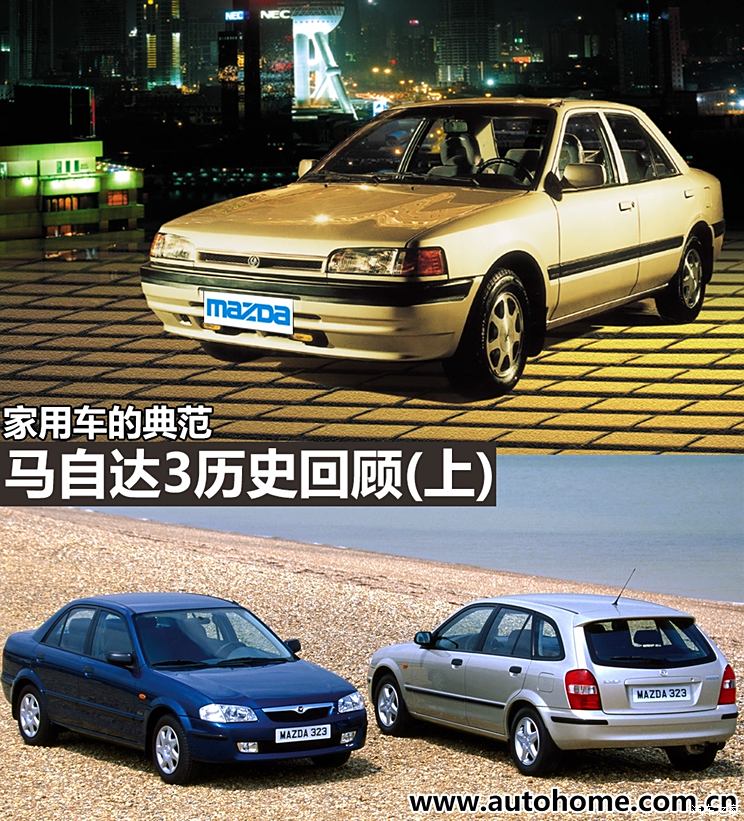
● The first generation of Familia(1963 -1968)
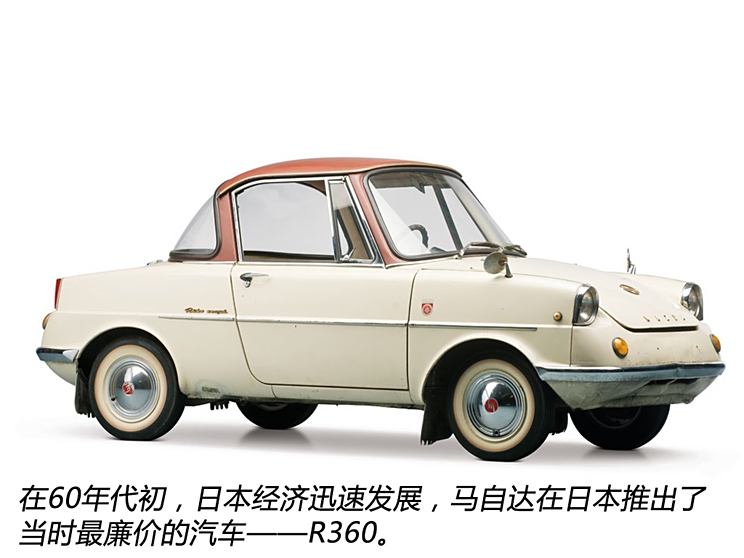
Japanese car companies usually divide the same model into different names according to different countries. For example, Mazda 3 is called Axela and Atenza in Japan, while Mazda 3′ s ancestor model is called Familia, and later it is known as 323. In the early 1960s, Japan’s economy began to rise and develop. At this time, Mazda also began to develop rapidly, and introduced the ——R360, the cheapest car in Japan at that time (the sales volume beat the first 360).
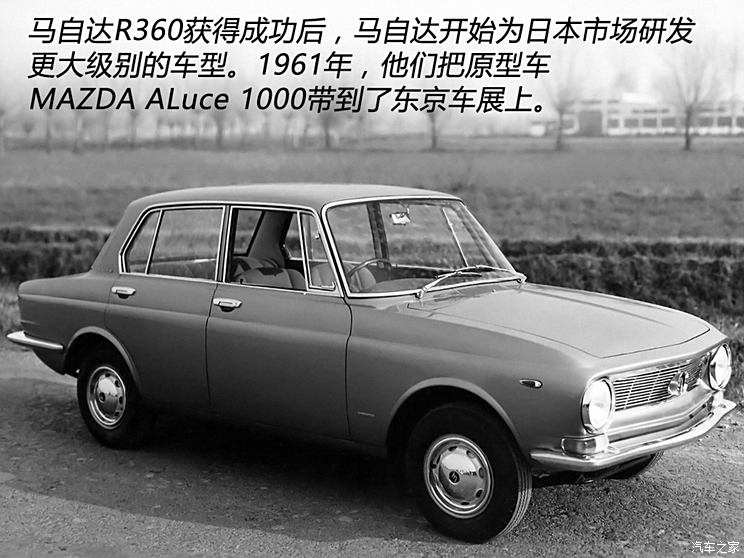
The R360 was a great success after it went on the market, and then Mazda began to develop larger models for the Japanese market. In 1961, Mazda brought the newly developed MAZDA ALuce 1000 to the exhibition, which was the prototype of Familia. Familia is Spanish and has the same meaning as English Family. In 1963, the first generation of Mazda Familia came out, and the first model was actually a two-door VAN. (Note: VAN and Wagon are not the same model)
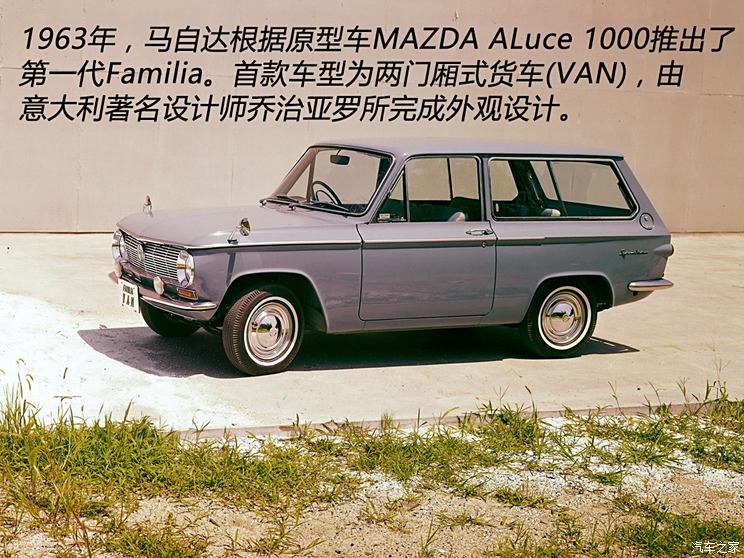
The first Mazda Familia car was equipped with a four-cylinder with a displacement of 782cc, so it was called 800. At that time, car companies often used the displacement as the name. What is important is that the exterior design of the car was handed over to the Italian automobile design company, which was completed by a famous designer and immediately became a commercial success after listing. Although Familia 800 Van is a two-door design, due to the model, the spacious trunk and rear space in the car were quite impressive in that year, making it an excellent family car.
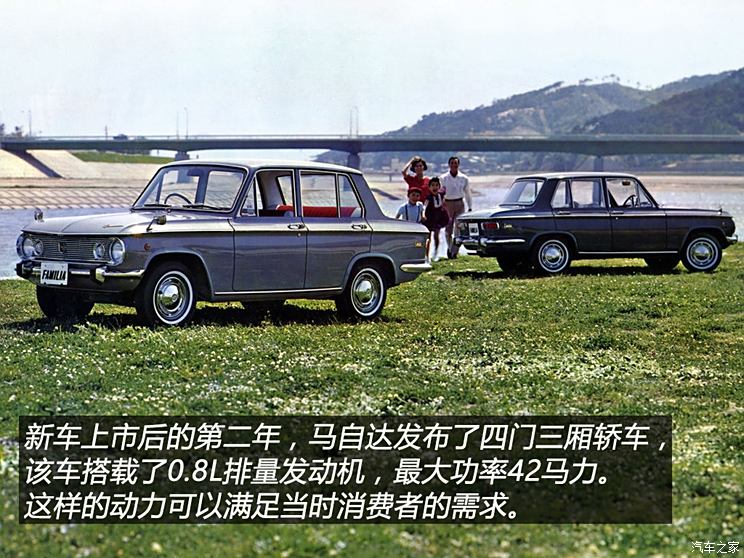
In the second year after listing, Mazda immediately released the Familia four-door version of the car. Compared with the first van version, the whole car turned into a car, which looks like no contradiction. The body size of 3700×1465×1385(mm), 2190mm, also became a very standard sedan in that year. In terms of power, it is equipped with a 0.8L four-cylinder naturally aspirated engine, with a maximum horsepower of 42 HP and a peak value of 59 Nm. With four speeds, the maximum speed can reach 115 km/h. Such a set of data can fully meet the market demand in the 1960s.
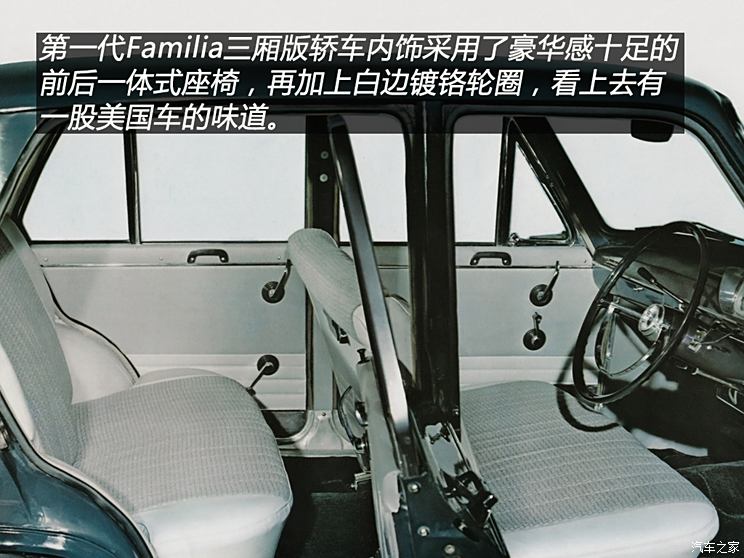
Familia sedan has sofa-like integrated seats in the front and rear, chrome-plated rims with white edges and chrome-plated bumpers in the front and rear, which makes this Japanese family car with small size quite like an American car. Two-door models are listed at a time interval of one month. Now it seems that the practice of Japanese cars launching two-door and four-door versions on the same model has already appeared a long time ago, so that diversified cars may also meet different needs of consumers.
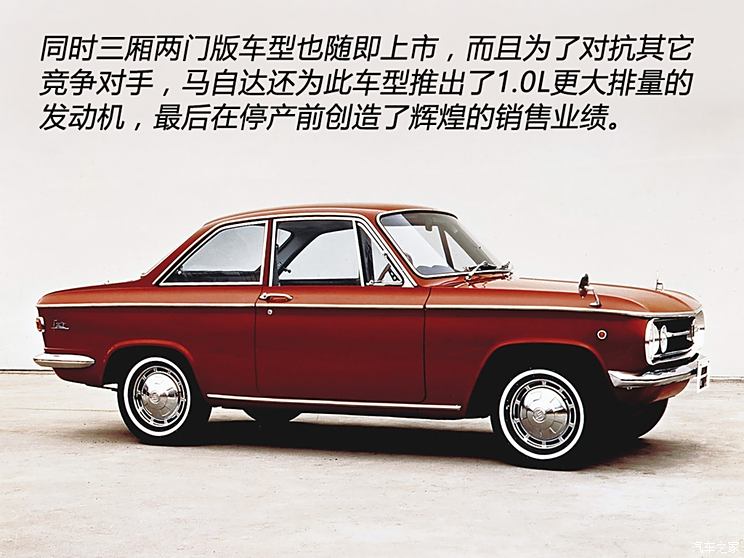
In 1965, Mazda first upgraded Familia’s 0.8L displacement engine, with an increase of 3 horsepower and a slight increase in torque. At the same time, a new 1.0L displacement engine was introduced to cope with their competitors. The 1.0L engine, which was first installed on two-door models, has a maximum power of 58 HP, a peak torque of 77 Nm and a top speed of 135 km/h.. In 1967, the 1.0L four-door sedan went on the market, and a two-door model was also introduced. As of February 1968, the first generation of Mazda Familia was officially discontinued. During its sales period, its annual output exceeded 10,000 vehicles for several years, and it once became the main model of Mazda brand.
● The second generation Familia(1967 -1977)
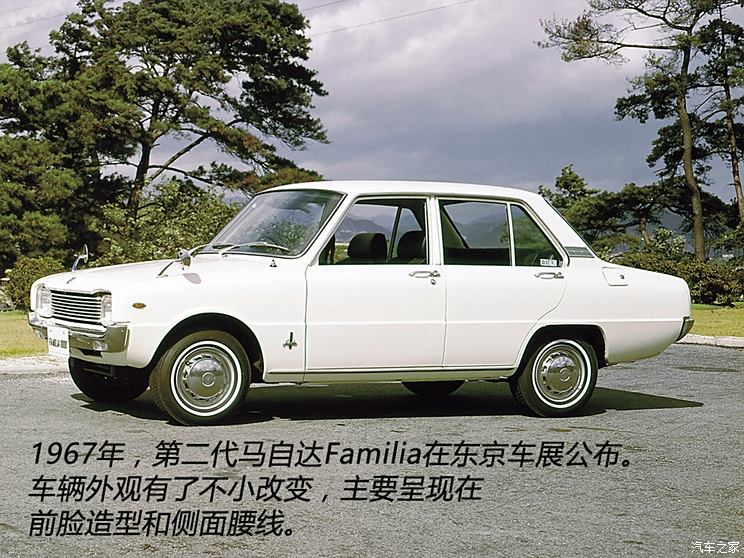
In 1967, the second-generation Mazda Familia appeared at the Tokyo Auto Show in Japan, and the appearance of the vehicle changed a little. The front part of the vehicle changed from the previous generation of "four-eye" round lights to square headlights, and the redesigned banner-type front middle net looked simple and neat. If it is put now, it will be a standard modified unmarked middle net (joking). The waistline of the side of the car body is adjusted to the lower wheel eyebrows at the height of the door handle, and the overall center of gravity of the vehicle looks lower. Replacing the brand-new rear taillights is much more refined than the first generation models, which improves the appearance grade of the vehicle, and the wheels still continue the collocation of tire white rings and chrome-plated wheels.
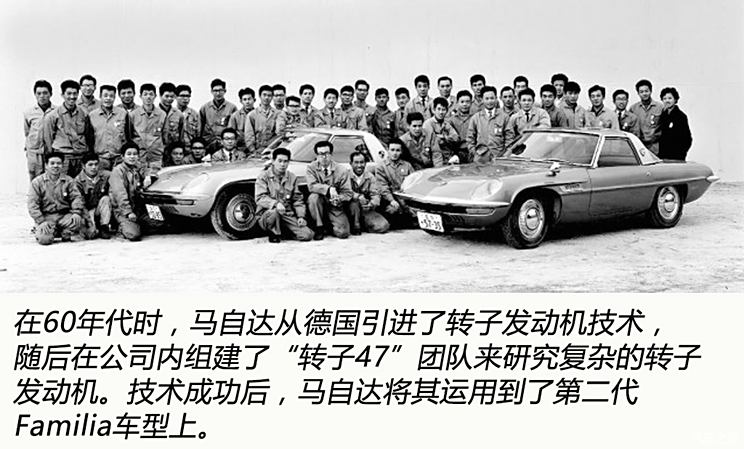
The second-generation Familia, which just went on the market, used the 1.0L engine of the previous model in power. In 1968, two engines with 1.2L displacement and 1.3L displacement were introduced one after another. In addition, there is another very important thing: in the early 1960s, Mazda introduced technology from Germany, and the company specially set up a "rotor 47 strong man" team to develop this special engine. Mazda matched the rotor engine to the second generation Familia, making this car the second Mazda model equipped with a rotor engine.
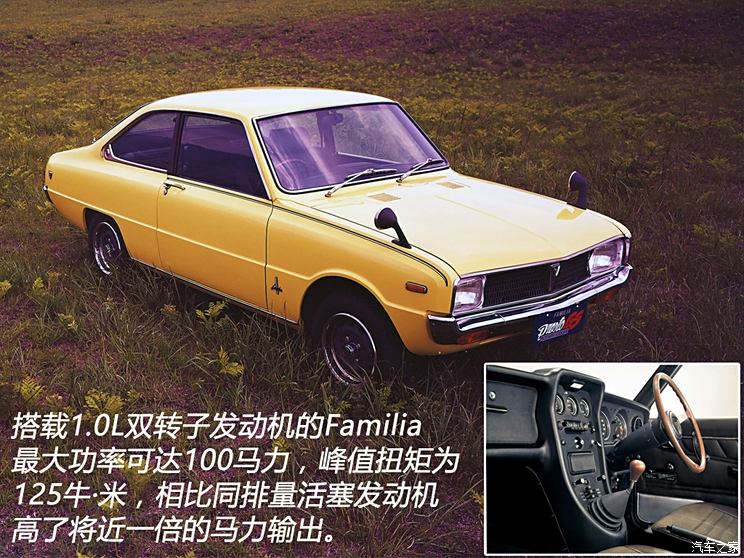
The Familia model equipped with a rotary engine is called "Familia Rotary" in Japan, and the export version is called "Mazda R100". The 1.0L engine of this car code 10A is designed with two rotors, with a maximum power of 100 HP and a peak torque of 125 Nm, which is the first rotary engine developed by Mazda. At that time, this "Familia Rotary Coupe" was very advantageous in Japan, because it had nearly twice the power compared with the model equipped with the same displacement engine, that is, the piston engine model with the same power needed to be equipped with a larger displacement engine and pay higher taxes.
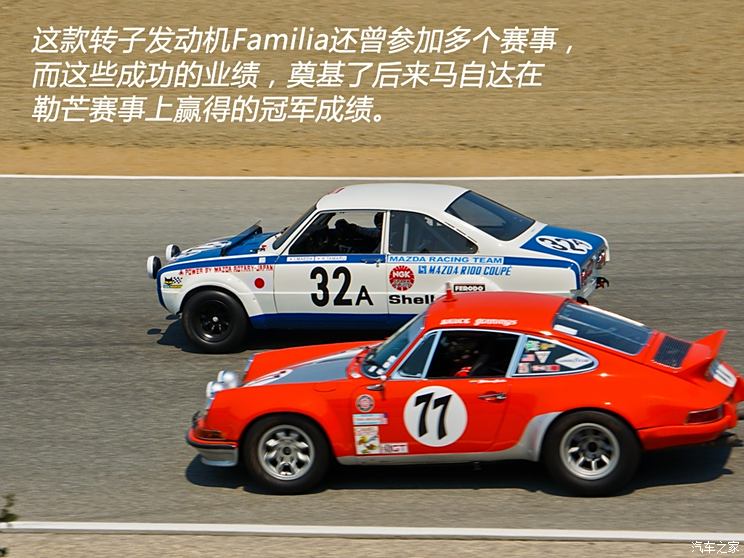
Familia, a family car with a rotary engine, has also been exported to the United States and other countries. After its success, Mazda began to participate in race activities with it. It won the race for the first time in the Singapore Grand Prix in 1969, and even more exaggerated, it won the fifth place in the 84-hour endurance race. In addition, I also participated in many different forms of competitions, which laid the foundation for Mazda to get good results in Le Mans. (The 787B racing car with rotary engine won the Le Mans championship for Mazda)
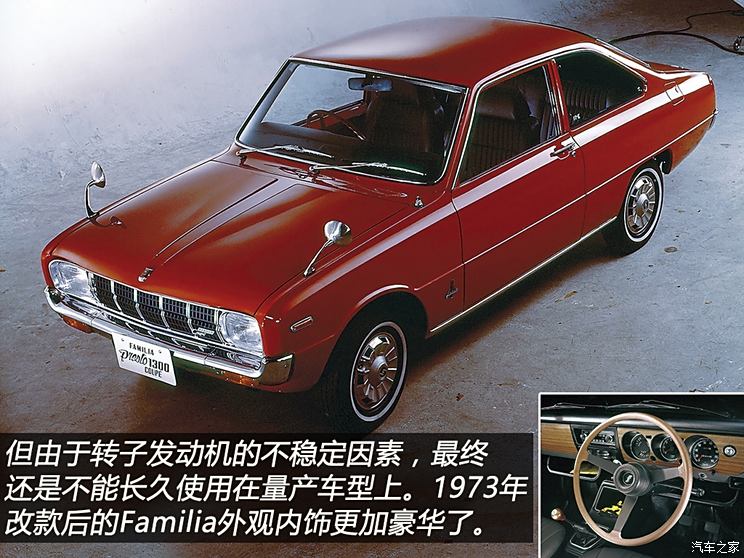
Due to various unstable factors, the rotary engine was still unable to replace the traditional piston engine at that time. Finally, Familia was abandoned to use the rotary engine, and the main power units were the 1.2L engine with the maximum power of 58 horsepower and the 1.3L four-cylinder engine with 69 horsepower. In 1973, the second-generation Mazda Familia ushered in a change and renamed it "Familia Presto". The appearance of the changed model changed, with a wider body and a more luxurious appearance, but these changes were only for two-door and four-door cars, and the styles of travel trucks and pickup trucks remained unchanged.
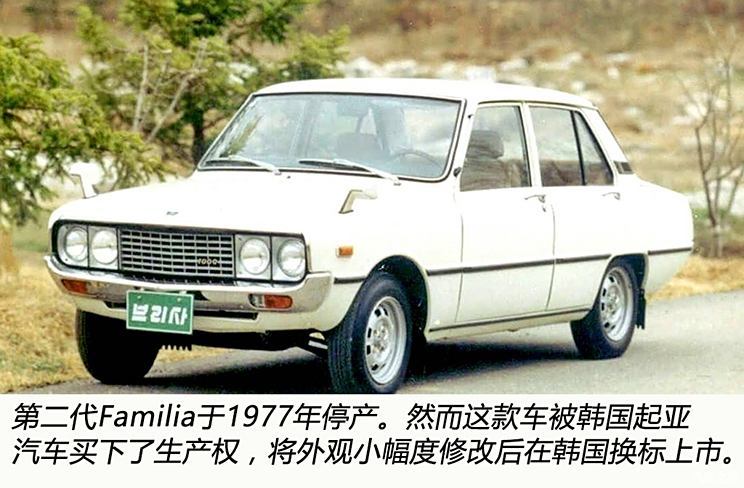
By 1977, the production of the second generation Familia was coming to an end. Mazda mainly adjusted the vehicle emissions before stopping production. Due to the restrictions of Japanese regulations, Familia no longer used 1.0L displacement engines, but mainly used 1.3L displacement engines. Finally, there was an episode in the second-generation Familia model. Korean cars bought the production license of the car from Mazda, renamed it "Kia Brisa", and slightly modified the appearance, and produced it from 1974 to 1981.